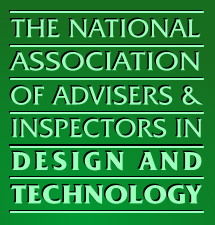
Latest entries in this section
Make a contribution
The new NAAIDT website is designed to provide a means through which NAAIDT Members can share information and advice relating to design and technology education
Click on the Help link for guidance on how to add content to this web site. Note that this facility is restricted to NAAIDT members following a successful logon. All contributions will be moderated by NAAIDT before being made public so please allow a short time for this process to be completed. You may use the email link at the foot of this page to contact the website editor in case of problems.
D&T Online
NAAIDT Project Exchange
About NAAIDT Project Exchange
Project Exchange provides teachers and others with the opportunity to share ideas for design and technology projects and activities. Each entry comprises a text description to a common format and, if available, a related illustration. Provision is made also for colleagues to share related learning materials using the Downloads button where this is implemented.Link to NAAIDT Project Exchange
DT Online Pneumatics
About pneumatics
Pneumatic systems typically involve a source of compressed air being controlled by valves and causing output devices such as cylinders to operate in a controlled way.
The compressed air is typically obtained from a COMPRESSOR, which is usually driven by an electric motor or an internal combustion engine.
Air is routed through pipes to VALVES which control the routing of the compressed air. Valves may be operated by a range of ACTUATORS including levers, rollers and solenoids.
The air is then passed on to cylinders which convert the energy in the compressed air into linear motion and do useful work.
Finally, the used compressed air is released into the atmosphere as EXHAUST.
Link to DT Online Pneumatics
Link to BBC - GCSE Bitesize Pneumatics
NAAIDT Patron: Sir James Dyson
External web links: This website contains links to other websites. NAAIDT is not responsible for the privacy practices of those other websites nor is it responsible for the content of those sites. Please contact the site editor at newseditor@naaidt.org.uk to comment or to suggest amendments or corrections.
Copyright © NAAIDT 1999 - 2025
Programming by Dial Solutions Ltd

 Target Audience
Target Audience